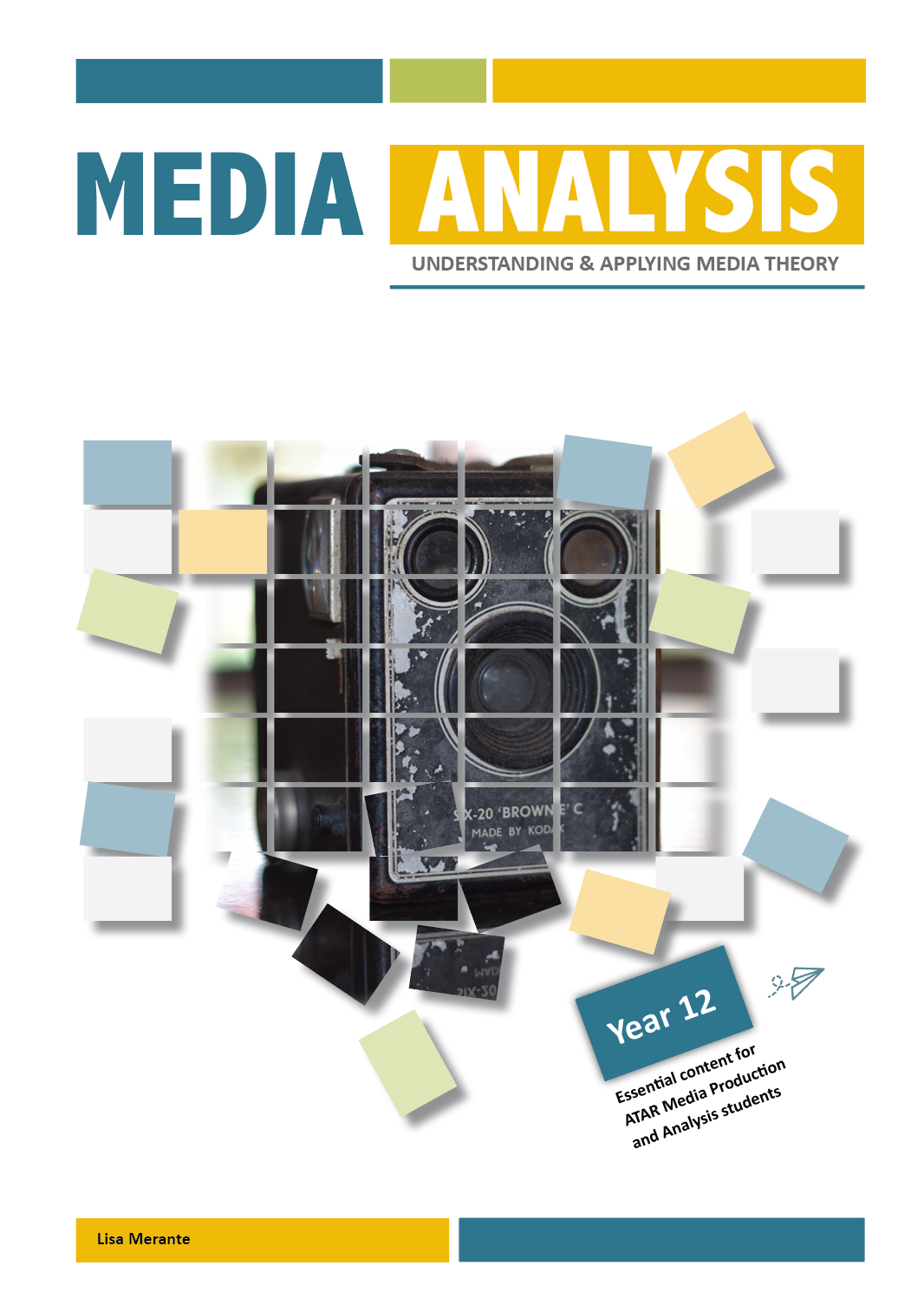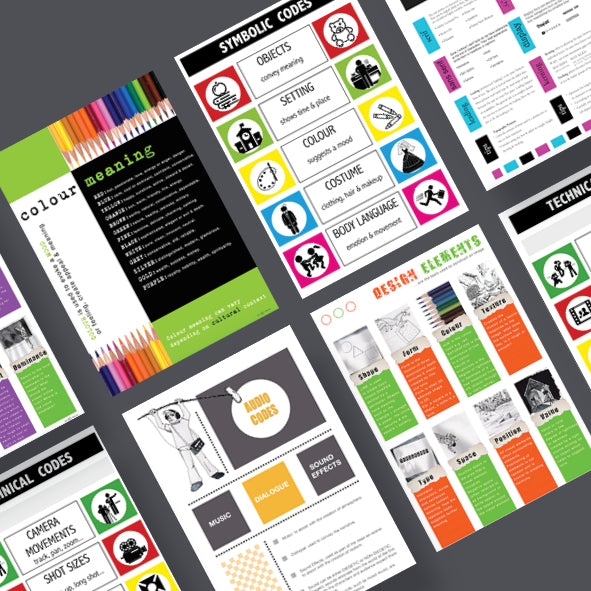
Representation is an important concept that students need to understand in today's world. From social media to politics, representations influence how we see ourselves, others, and the world around us. But how can you teach this complex idea to high school students? In this blog post, we'll explore 5 strategies for teaching representation.
Representation in the media refers to how certain groups of people or ideas are depicted, portrayed, or shown. It encompasses everything from casting choices to character construction to visual imagery
-
The Codes of Construction: Decoding the Messages Behind Representations
A representation is a re-presentation of reality constructed from a choice of codes. Consider how a business person is represented in the media using the symbolic codes of construction:
- Clothing: business attire is often signalled by a dark suit and tie, professional shoes, well-fitting, conservative clothing.
- Colours: often dark such as navy, black, or grey. Occasional bright accents such as a red tie or red shoes
- Objects: Mobile phone, laptop, briefcase
- Setting: Boardroom, office, city setting (often with sweeping views), high tech busy workspace.
- Body language: confident, clear eye-contact, focused, assertive, serious facial expressions, firm handshake.
Technical codes aid in shaping representations:
- For example in The Hunger Games, director Gary Ross uses technical codes to construct President Snow as a villain. He employs low-key lighting to create a sense of darkness and secrecy around Snow, emphasizing his mysterious and manipulative nature. Moreover, he uses low-angle shots to create a sense of dominance and power, particularly when Snow is speaking to other characters.
- Ross uses framing to separate Snow from other characters, often placing him in isolated, static shots to convey his detachment and distance from the world around him. This creates a sense of unease and discomfort whenever Snow appears on screen, making him a formidable and intimidating villain.
Representations send messages about is valued in society and what is not.

(Merante, 2022)
-
The Importance of Representation in the Media
What Is Selected and What Is Omitted: The Power of Perspective
Representations can shape our perception of reality by foregrounding or highlighting certain aspects, or omitting or leaving other aspects out. The following examples demonstrate demonstrates the importance of representation in the media and the need for accurate, diverse portrayals:
- According to a study by the Centre for the Study of Women in Television and Film, only 19% of business characters in the top 100 grossing films of 2020 were female. This suggests a significant gender imbalance in the representation of business people in media (Center for the Study of Women in Television and Film. 2021).
- Another study by the Annenberg Inclusion Initiative found that in the top 100 grossing films of 2018, only 8.1% of all characters in leadership positions (such as CEO, president, or vice president) were from underrepresented racial/ethnic groups. This suggests that even when business people are represented in media, they are often depicted as being white and male, and there is little diversity in leadership positions (Smith, et al. 2019).
- By including marginalized voices in our media representations we can begin to challenge dominant narratives and allow for a diversity of voices to be heard in mainstream media.
Representations aren’t neutral as they selectively show specific aspects of groups of people or issues and omit others. Watch out for selective representation in media texts you consume.
-
Representations Are Value-Laden: Why Representation Matters
- As representations are constructed form a choice of codes they are value laden. By choosing certain codes to represent an entire group a value judgment has been made.
- Values and beliefs underpin different representations (e.g., gender stereotypes, racial biases). As an example, traditional gender roles portrayed in the media include the incorporation of values which perpetuate the stereotypical representation of men as powerful and strong and women as weak, passive, or submissive. For instance, although the Bond Franchise of films has attempted to update its portrayal of women its legacy of films frequently casts females as the love interest or into the role of reward (through sexualization and objectification), thus perpetuating the representation that a women’s worth is based on her appearance rather than her intellect. Equally the film Black Panther saw a celebration of African culture
- Values embedded in media representations can affect people's lives and opportunities (e.g., discrimination, lack of representation)
- Representations can either reinforce or challenge dominant cultural narratives, as well as shape perceptions of groups of people. As evidenced by a survey conducted by the Dove Global Beauty and Confidence Report found that 63% of women believe that the media sets an unrealistic standard of beauty (Dove, 2016).
What we see in the media matters as the content is loaded with beliefs and values that can shape our understanding of the world we live in.
-
The Impact of Negative Representation in the Media
Simplification: The Danger of Stereotypes
- Representations take a complex group of people or a complex idea and simplifies by choosing specific codes to represent the group or idea. Representations, when repeated often enough form stereotypical understanding of identities and complex idea. (e.g., the dumb jock, the dumb blonde, the submissive housewife).
- Negative representation in the media can perpetuate harmful stereotypes and contribute to self-doubt, discrimination and prejudice. Representations matter. All groups need to see themselves represented positively in the media, not marginalised, discriminated or negatively stereotyped. For instance, The portrayal of Muslims in media, particularly post-9/11, has perpetuated negative stereotypes and contributed to Islamophobia. According to a study by Media Tenor, in the first three years after 9/11, coverage of Muslims in the media was overwhelmingly negative.
Representations simply complex identities into simplified stereotypes. The simplification process can often produce harmful stereotypes.
-
Context: Including the Bigger Picture
Representations are not created in a vacuum, they arise out of specific cultural, historical. social, economic and political contexts.
- For instance, consider how the #metoo movement shaped the Gillette Is This the Best a Can Be 2019 advertisement. The advert addressed issues of toxic masculinity, bullying and sexual harassment which arose from the movement. It used representations of men presented as sexist via their poor behaviour towards women in the workplace and at home and advocated for change by role modelling positive representations of men promoting gender equity and standing up to those who sexual harass or intimidate women. The advert set out to challenge the representation that “boys will be boys will be boys” and instead embraced accountability and responsibility by questioning long standing representations of gender norms, including in their own advertisements.
Understanding the importance of representation in the media, defining what it means, and explaining why it matters are all critical concepts for upper school students to master. By analysing specific examples and interesting statistics, we can demonstrate the impact of media representation on our beliefs, values, and attitudes. Our textbook, Media Analysis: Understanding and Applying Media Theory, provides students with the tools they need to apply these concepts in the classroom and beyond.
Reference List:
- Center for the Study of Women in Television and Film. (2021). "It’s a Man’s (Celluloid) World: Portrayals of Female Characters in the Top Grossing Films of 2020." San Diego State University
- Dove. (2016). The Dove Global Beauty and Confidence Report. https://www.dove.com/content/dam/unilever/dove/united_states/america/pdfs/global-beauty-confidence-report-2016.pdf
- Merante,L. (2022). Media Analysis: Understanding and Applying Media Theory. Media and English Literacy Publishing.
- Smith, S. L., Choueiti, M., & Pieper, K. (2019). Inclusion in the director’s chair? Gender, race, and age of film directors across 1,100 popular movies. Annenberg Inclusion Initiative.
FAQS:
- Can you provide specific examples of media texts that showcase diversity in representation?
- What are some classroom activities that best teach representation?
- How can a teacher address resistance or differing opinions on representation topics in classroom discussions?
ANSWERS:
1. Examples of media texts showcasing diverse and accurate representation include films like Black Panther or series like Pose, which highlight cultural identity and inclusivity. Or consider The Simpsons as it offers a mix of stereotypes, Brooklyn Nine-Nine as it uses non-stereotypical characters, or Dear White People as it critiques race and privilege.
2. Media Text Analysis: Have students deconstruct scenes from popular movies or advertisements, identifying technical, audio, written and symbolic codes (e.g., camera angles, colour, titles and music) and discussing how they shape representations.
Role-Reversal Exercises: Assign groups to rewrite or reimagine media portrayals, swapping traditional roles or stereotypes to explore how representation shifts audience perception.
Case Study Comparisons: Compare two media pieces—one with stereotypical portrayals and another with nuanced representation—analysing their impact on audiences and discussing societal implications.
3. Handling resistance is not easy, but be ready to do some empathy building activities such as sharing first person accounts from underrepresented groups or try the Step in, Step Out, Step Back strategy to see a topic from another's perspective (Try: https://letstalkscience.ca/educational-resources/teaching-stem/considering-perspectives-step-in-step-out-step-back)



